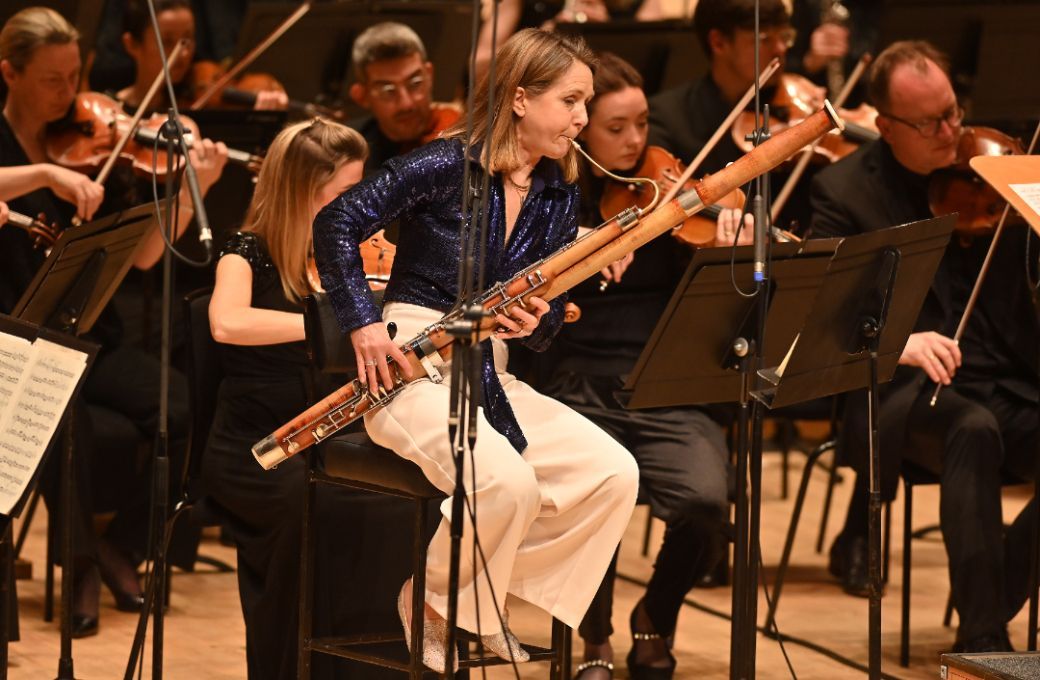There are now almost as many jokes about the bassoon as there are about the viola. One wonders why. Every orchestra would be vastly poorer without these dark-toned string and woodwind instruments. All the better then that Sakari Oramo and the BBC Symphony Orchestra showcased their principal bassoon, Julie Price, in two distinctive pieces. Price may not have the biggest of sounds, and in the first movement of Mozart’s Bassoon Concerto, despite having a string accompaniment pared back to a small group grounded on two double-basses, her line was sometimes covered. However, she does have a warm and nutty tone, and her even legato line was apparent throughout, each individual note beautifully centred.

Mozart’s work, written when he was still in his teens, does not involve virtuoso displays, and indeed much of the playing is directed to be colla parte, but it still requires considerable agility, especially in negotiating rapid transitions between the registers. Price’s very relaxed manner on the platform underlined the serenade-like characteristics of the piece, and the concluding Rondo was not without a touch of impishness, yet it was the heartfelt nature of the central Andante ma Adagio which immediately yielded the link with the composer’s substantial operatic work still to come, an aria in all but name.
There is something quite unmistakeable about Elgar’s music, even in a miniature like the Romance for bassoon and orchestra, composed between his Violin Concerto and Second Symphony. It is there in the aching phrases, the gently rocking string figurations and brief surges from the brass. In this reading, with fine support from Oramo and Price’s colleagues, the nobility but also delicacy of this instrument emerged, and the soloist herself provided the tenderest of endings. The bassoon is sometimes viewed as the buffoon of the orchestra, garrulous and grumpy, and it is always good to be reminded of its many other qualities.
This concert opened with the Uwertura or Overture for Orchestra by the Polish composer Grażyna Bacewicz. Extraordinarily prolific, she has over 200 works to her credit, having studied previously with Nadia Boulanger in Paris. In 1943, while war was raging throughout Europe, she produced this short six-minute piece, quite filmic in its overall design. Closely following the model of the Italian overture (Allegro-Andante-Allegro), it makes use of the Morse Code symbol for victory, its defining pattern (dot, dot, dot, dash) beaten out by the timpani. Oramo directed a crisp and vibrant account, highlighting the Nielsen-like energy, the strings constantly driving the tempo in the quasi-perpetual motion writing. At the end it was almost like watching an early Hitchcock film, the train hurtling towards the mouth of a dark tunnel.
The BBCSO was on splendid form for Dvořák’s Eighth Symphony, the horns exceptionally so, with angelic playing from the entire woodwind section. Oramo’s strings were lithe and supple, displaying big-hearted warmth in both the Adagio and the Finale. Tempi were mostly judicious, the seams in the stitching neatly concealed. Despite all this, I was left wondering whether the essentially Bohemian, dance-like qualities of this lyrical work had possibly eluded Oramo.
The opening movement was so much on fire, angry and raw in spirit at times, the brass much too forceful in tutti passages, the textures almost unrelentingly bright, that there wasn’t quite enough in the tank for the Finale. The slow movement was a leisurely walk in the park, untroubled by anything lurking in the bushes, and the Allegretto grazioso lacked a closer connection to its waltz elements. From here there was an attacca into the last movement, the trumpets quickly dispelling the preceding mood of reflective calm.


